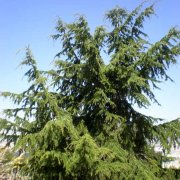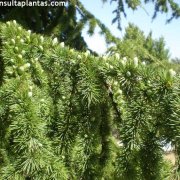Care of the tree Cedrus libani or Lebanon cedar |
|
The genus Cedrus, family Pinaceae, comprises 4 species of large trees native to the Mediterranean region and the Himalayas. The species are: Cedrus libani, Cedrus deodara, Cedrus atlantica, Cedrus brevifolia. Common names: Cedar of Lebanon, Lebanon cedar. This species is native to Lebanon, and Turkey. They are impressive pyramidal trees (when they are young) and after extended growth they reach 40 meters (131.23 feet) in height; they can live for more than 2,000 years. The leaves are grayish light green needles and appear in rosettes or isolated. In early spring female and male flowers appear that are not ornamentally interesting. The ovoid-shaped pineapples take up to 2 years to mature and release the seeds. Cedar of Lebanon is used in large gardens and in public parks; There are varieties like Cedrus libani "Nana" and Cedrus libani "Sargentii" for small gardens. The wood is of very good quality and has been used since ancient times. Cedrus libani prefers full sun or well-lit exposure; it resists occasional frosts. Lebanon cedar prefers a calcareous soil, with organic matter and well drained; it can grow in other well-drained soil types. Plant in fall. Water young specimens frequently (up to 3-4 years) and moderately when they are adults; Cedrus libani resists drought well. Prune only to remove dry branches. Fertilize with manure in early spring. Cedar of Lebanon is a slow-growing tree resistant to the usual garden pests; it does not tolerate excess watering. Lebanon cedar propagates by seeds sown in spring but it's a rather slow process. |
Images of the tree Cedrus libani or Lebanon cedar |
Find plants
Cedrus libani or Lebanon cedar | Care and Growing
© 2025 FavThemes





